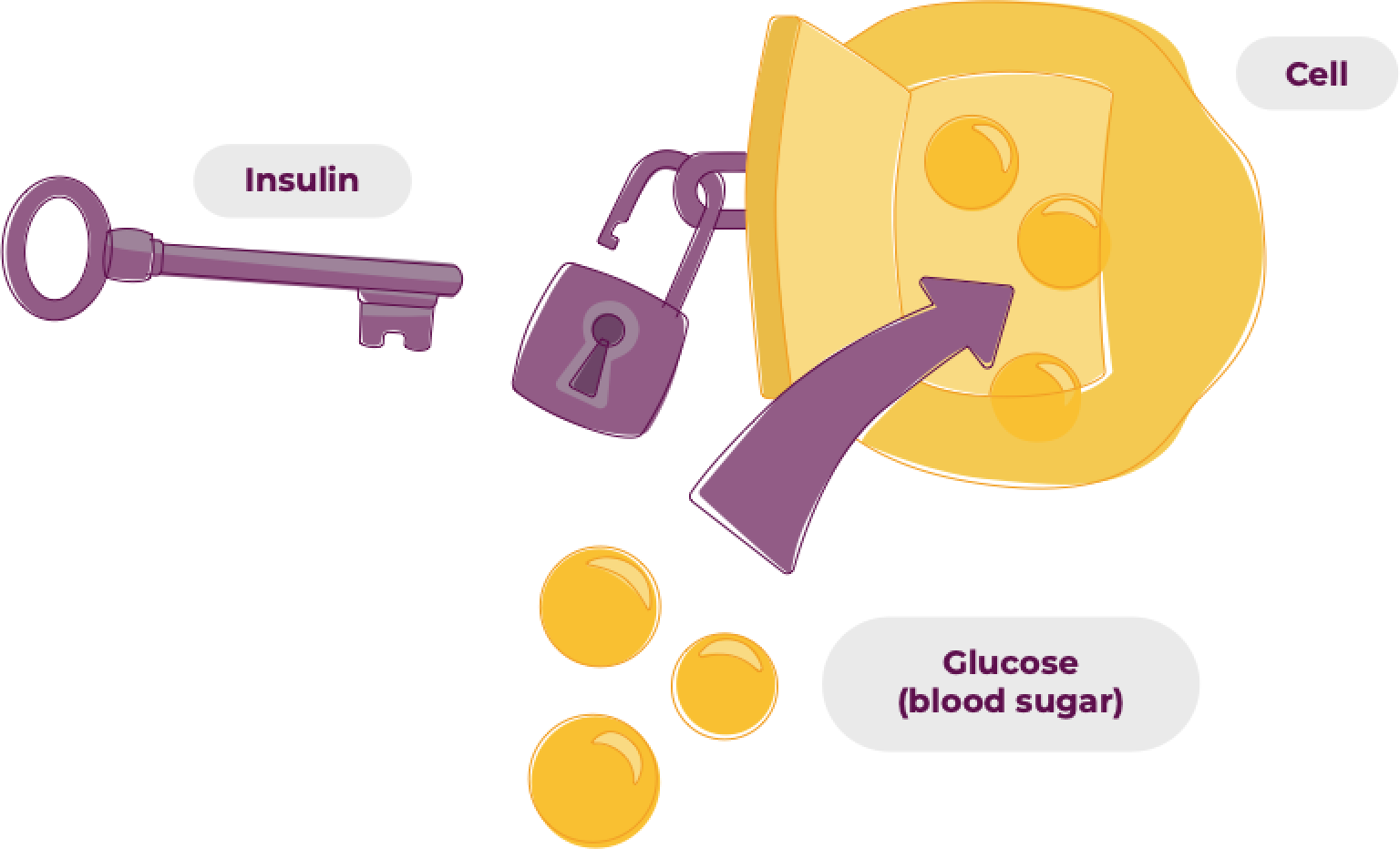Insulin is a hormone that your body produces in your pancreas. To visualise how it works, imagine insulin is a key that allows glucose from the food we eat to enter our cells to be used as energy.
When your body does not produce enough insulin, it’s not able to get glucose out of the bloodstream and into your cells. The glucose then remains in the bloodstream causing blood glucose levels to rise.
Insulin therapy mimics the natural action of insulin in the body to help glucose enter the cells.

You may need insulin therapy if you have:
Type 1 diabetes because your body produces little to no insulin naturally. You will need daily insulin to supplement or supply the insulin required for glucose to enter your cells.
Type 2 diabetes because the insulin your body is producing isn’t as effective as it should be. As diabetes progresses, the body may need additional insulin to manage blood glucose levels.
Gestational diabetes, which can occur during pregnancy when there is an added demand for insulin. However, even if insulin is required during pregnancy, once the baby is born treatment is typically discontinued.
There are 2 main types of insulin:
Long-acting (basal insulin)
They are designed to release insulin gradually, like a marathon runner.
Basal or background insulins are released in a slow, steady way needed to control blood glucose levels between meals and while you sleep.
Short- or rapid-acting (mealtime insulin)
They are like a sprinter. They go out hard and fast and may only last for a few hours.
Prandial or bolus insulins are released quickly to manage the large increase in blood glucose at mealtimes.
Other insulins include intermediate-acting insulin and premixed insulin.
An important part of insulin therapy management is monitoring your blood glucose levels.
Blood glucose levels are a clue to understanding whether your insulin dose is working for you.
For example,
Speak to your doctor for more information about your insulin dosing.
All insulin works to reduce blood glucose levels, so it’s not unexpected that the most common side effect would be low blood sugar, i.e., hypoglycaemia. Having a hypoglycaemic episode may also be referred to as having a ‘hypo’. Hypoglycaemia should be treated urgently to stop the fall of blood glucose levels.
Common causes of hypoglycaemia:
- Skipping meals
- Delayed meals
- Not eating enough carbohydrate
- Unplanned physical activity
- More strenuous exercise than normal
- Too much insulin
Symptoms to look out for:
- Headache
- Sweating
- Feeling irritable or agitated
- Feeling weak
- Trembling or shaking
- Feeling hungry
- Feeling dizzy or light-headed
- Feeling teary or crying
It’s important to remember that is normal for blood glucose levels to go up and down throughout the day. However, if blood sugar levels remain high for several days, take the time to speak to your doctor or a CDE.
Hyperglycaemia is when your blood glucose level is above your target range. Hyperglycaemia is usually short lived, but if it continues for days or during illness, you may require treatment to bring blood glucose levels back into range. Speak to your doctor for more information on diabetes management during illness.
Common causes of hyperglycaemia:
- Sickness
- Infection
- Stress
- Too much carbohydrate food at once
- Not enough insulin or diabetes medicines
- Other tablets or medicines
Symptoms to look out for:
- Feeling excessively thirsty
- Frequently passing large volumes of urine
- Feeling tired
- Blurred vision
- Infections (e.g., thrush, cystitis, wound infections)
- Weight loss
It’s important to remember that is normal for blood glucose levels to go up and down throughout the day. However, if blood sugar levels remain high for several days, take the time to speak to your doctor or a CDE.
It’s time to talk about you
Now that you know some of the basics, it’s time to get personal! Diabetes management involves many co-dependent factors, including:
- Diet
- Exercise
- Weight management
- Medication management
- Other medical conditions
- And the list goes on…
This is where a CDE can really help you with understanding how each of these factors play a role in your own diabetes management.


